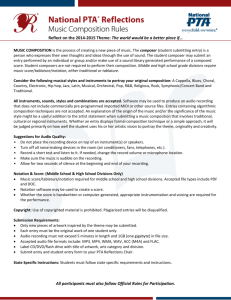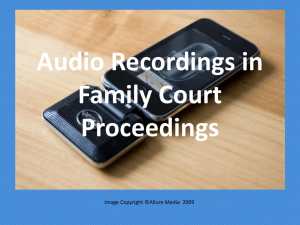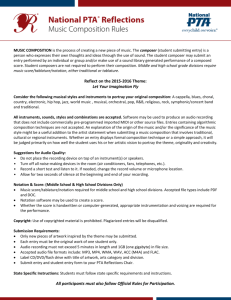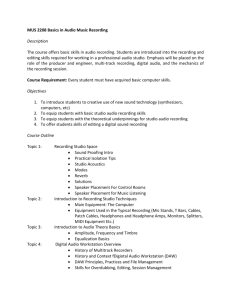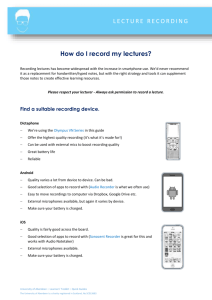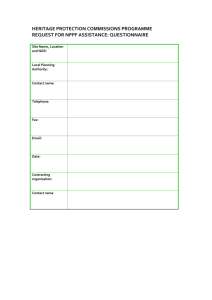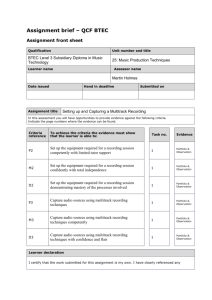Audio Recording II
advertisement
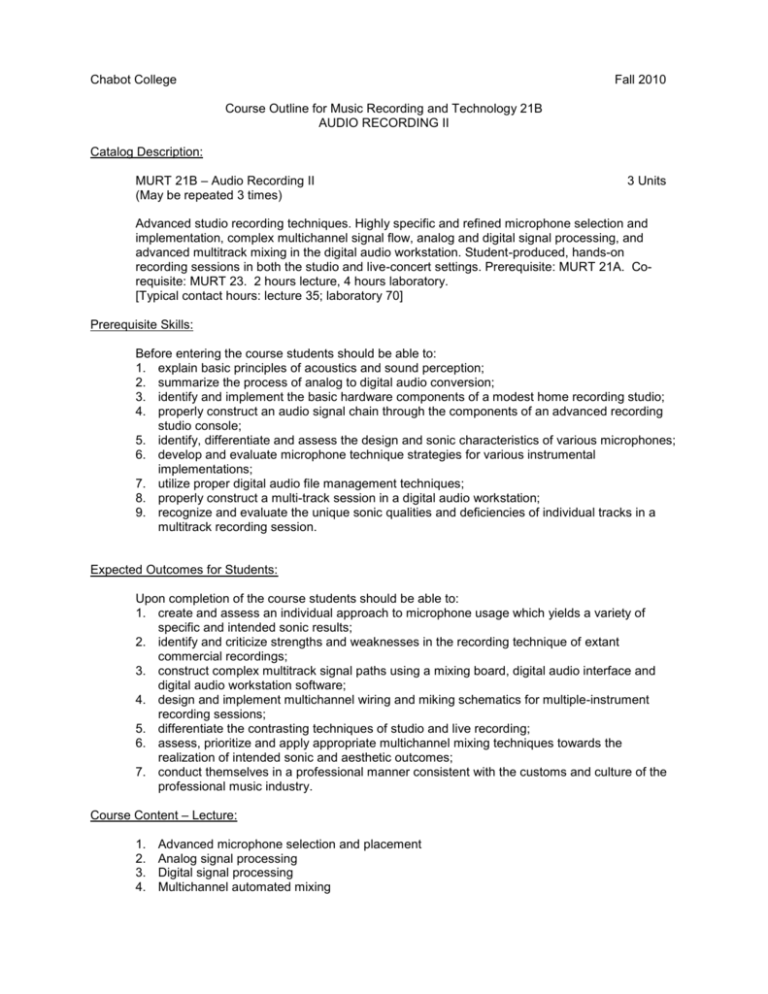
Chabot College Fall 2010 Course Outline for Music Recording and Technology 21B AUDIO RECORDING II Catalog Description: MURT 21B – Audio Recording II (May be repeated 3 times) 3 Units Advanced studio recording techniques. Highly specific and refined microphone selection and implementation, complex multichannel signal flow, analog and digital signal processing, and advanced multitrack mixing in the digital audio workstation. Student-produced, hands-on recording sessions in both the studio and live-concert settings. Prerequisite: MURT 21A. Corequisite: MURT 23. 2 hours lecture, 4 hours laboratory. [Typical contact hours: lecture 35; laboratory 70] Prerequisite Skills: Before entering the course students should be able to: 1. explain basic principles of acoustics and sound perception; 2. summarize the process of analog to digital audio conversion; 3. identify and implement the basic hardware components of a modest home recording studio; 4. properly construct an audio signal chain through the components of an advanced recording studio console; 5. identify, differentiate and assess the design and sonic characteristics of various microphones; 6. develop and evaluate microphone technique strategies for various instrumental implementations; 7. utilize proper digital audio file management techniques; 8. properly construct a multi-track session in a digital audio workstation; 9. recognize and evaluate the unique sonic qualities and deficiencies of individual tracks in a multitrack recording session. Expected Outcomes for Students: Upon completion of the course students should be able to: 1. create and assess an individual approach to microphone usage which yields a variety of specific and intended sonic results; 2. identify and criticize strengths and weaknesses in the recording technique of extant commercial recordings; 3. construct complex multitrack signal paths using a mixing board, digital audio interface and digital audio workstation software; 4. design and implement multichannel wiring and miking schematics for multiple-instrument recording sessions; 5. differentiate the contrasting techniques of studio and live recording; 6. assess, prioritize and apply appropriate multichannel mixing techniques towards the realization of intended sonic and aesthetic outcomes; 7. conduct themselves in a professional manner consistent with the customs and culture of the professional music industry. Course Content – Lecture: 1. 2. 3. 4. Advanced microphone selection and placement Analog signal processing Digital signal processing Multichannel automated mixing Chabot College Course Outline for Music Recording and Technology 21B, Page 2 Fall 2010 Course Content – Laboratory: 1. 2. 3. 4. 5. 6. 7. Advanced microphone selection and placement Multichannel, simultaneous recording of multiple instruments Analog signal processing Digital signal processing Analog mixing and busing techniques Digital mixing and busing techniques Multichannel automated mixing Methods of Presentation: 1. 2. 3. 4. Lecture/demonstrations (use of multimedia) Laboratory (in-class recording sessions) Listening assignments Guest speakers Assignments and Methods of Evaluating Student Progress: 1. Typical Assignments a. Read chapter on Microphone Design and be prepared to discuss b. Listen to, identify and discuss the sonic characteristics of a recording c. Demonstrate multi-channel wiring for multiple instruments d. Demonstrate proper audio signal flow configuration in a complex session 2. Methods of Evaluating Student Progress a. Class participation b. Performance on specific in-class technique demonstrations c. Laboratory work sheets and diagrams d. Homework e. Tests on chapter sections f. Final examination (written and/or lab practical) Textbook(s) (Typical): Modern Recording Techniques, Seventh Edition, Miles David Huber and Robert Runstein, Focal Press, 2009. Special Student Materials: Portable digital media storage, such as a flash drive or external hard drive, not below 2 Gigabytes of memory Eric Schultz, 2. COR-MURT21B.doc 6 October 2009 12-10-09 cp



